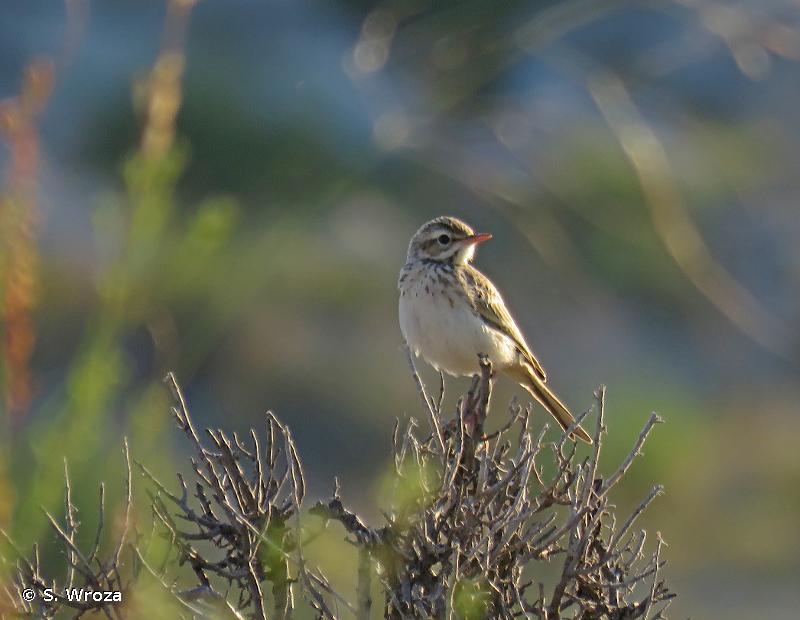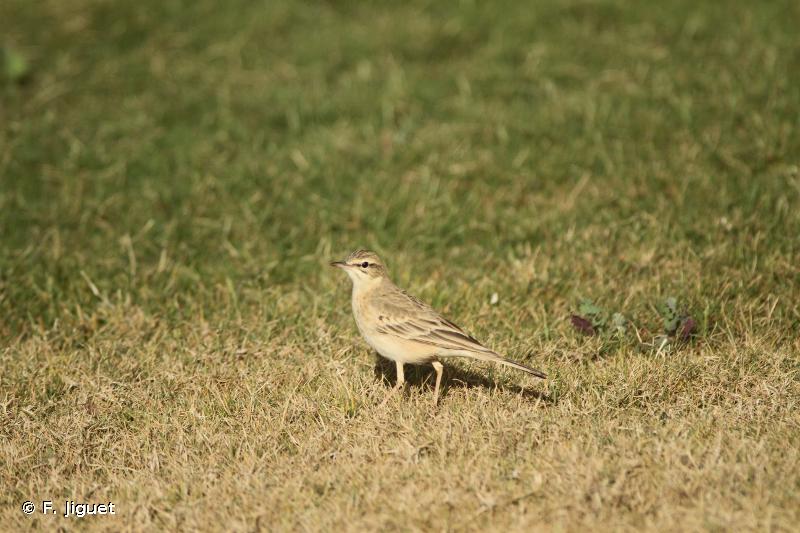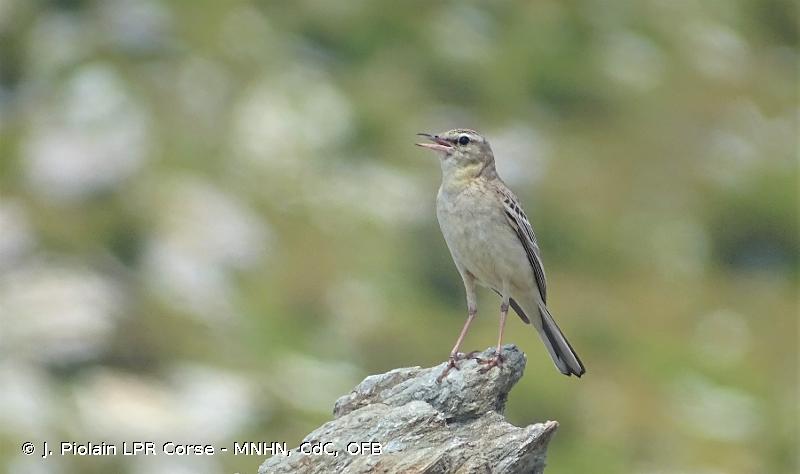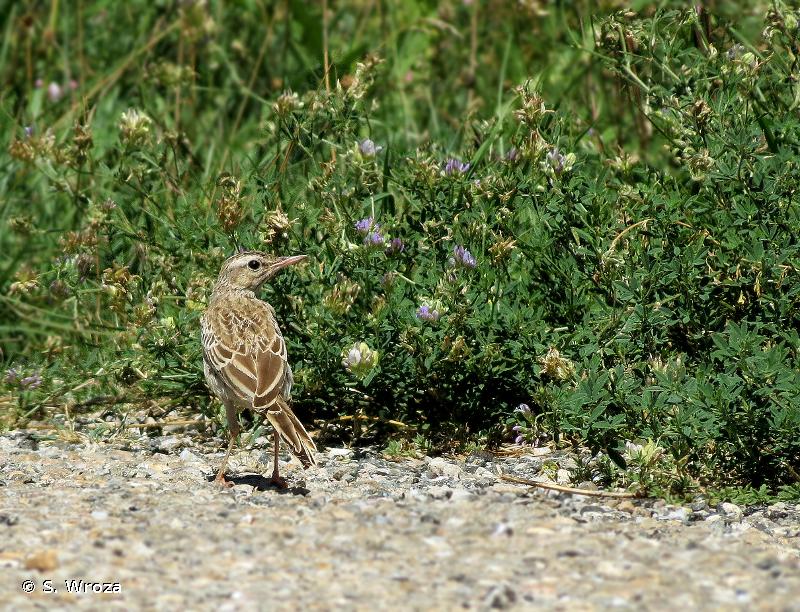
cd_nom

| Author : S. Wroza |
 |
Despite the Creative Commons license, please inform the author of the use which will be made of his photo

| Author : F. Jiguet |
 |
To get the picture, please visit:
Frédéric Jiguet
CRBPO
email : inpn@mnhn.fr
Despite the Creative Commons license, please inform the author of the use which will be made of his photo

| Author : J. Piolain LPR Corse - MNHN, CdC, OFB |
 |
To get the picture, please visit:
Despite the Creative Commons license, please inform the author of the use which will be made of his photo

| Author : S. Wroza |
 |
Despite the Creative Commons license, please inform the author of the use which will be made of his photo
Taille/poids :
Longueur totale : 15,5 à 18 cm. Poids : 25 à 30 g.
Diagnose :
Pipit de grande taille au port altier, haut sur pattes. La coloration générale des parties supérieures est chamois fauve uni. Les parties inférieures sont crème, avec quelques fines stries éparses sur les côtés de la poitrine. Le sourcil est large et blanc. Cet oiseau court rapidement entre les touffes de végétation, s'arrêtant subitement, dressé, pour examiner les alentours.
Détermination :
Moyennement difficile.
Espèces proches :
En vol, il ressemble un peu à une bergeronnette (Motacilla sp.) du fait de sa longue queue. Par ailleurs des confusions sont possibles avec Le Pipit de Richard Anthus richardi, espèce rare mais régulière en France.
Période d'observation :
Avril à septembre.
Biologie-éthologie :
Le régime alimentaire du Pipit rousseline est constitué principalement d'insectes qu'il capture à la suite d'une course brève, un peu à la manière d'un gravelot (Charadrius sp.).
Biogéographie et écologie :
Le Pipit rousseline niche au travers de l'Europe moyenne et tempérée, du Portugal à la Russie européenne. Au nord, il atteint le Danemark et l'extrême sud de la Suède. Sa limite méridionale est l'Afrique du Nord et la Jordanie. A l'est, il est répandu jusqu'au sud de la Mongolie et le nord-ouest de la Chine. Il s'agit d'un oiseau typique de milieu ouvert, à végétation rase. Il se plaît dans les milieux semi-arides, fréquemment sablonneux ou rocailleux : pelouses calcaires, dunes littorales, landes rases. Dans ses quartiers d'hiver africains, le Pipit rousseline se rencontre dans la savane.
Compilé par J. Comolet-Tirman à partir des Cahiers d’habitats.(UMS 2006 Patrimoine Naturel (AFB / CNRS / MNHN)),2017
Continental
Metropolitan France
Overseas
Marine
Metropolitan France
Overseas
The map presents a summary at the 10 x 10 km grid of the observation data for the species transmitted to the SINP. These data have been subjected to validation filters.
The map presents a reference distribution layer of the species at the scale of departments and marine sectors. The presence and absence data were established by expertise within a network of partners. This reference distribution is used in the validation process of the SINP data at the INPN level.
Corresponds to a report on the basis of at least one observation proved within a period of 10 years (20 years for little-known invertebrates) preceding the year and no presumption of extinction since obtaining the last data nor doubt on reproductive and implemented nature of this population. For migratory species, the presence indicated concerns areas of reproduction.
This status is based on one or more of the following criteria:
This point covers the absence, more difficult by nature to demonstrate than presence. This status is based on one or more of the following criteria:
This status must be assigned to a department in which the presence of the species is casual.
Particular case of absence due to a proven extinction less than a half century ago (older disappearances are treated as "no probable or definite").
In the state of knowledge, we can not comment on the presence or absence in the current department. This is the default status when not comprised in one of the previous categories or whenever there is doubt.
The map shows the global distribution of the species based on GBIF data (Global Biodiversity Information Facility).
